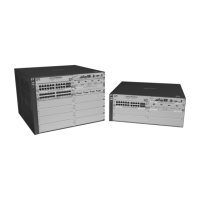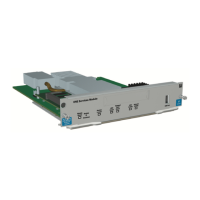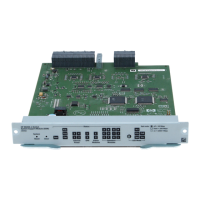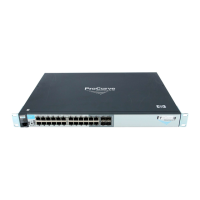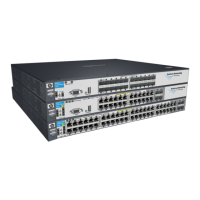Spanning-Tree Operation
802.1s Multiple Spanning Tree Protocol (MSTP)
Configuring Basic Port Connectivity Parameters
Command Page
spanning-tree < port-list >
edge-port below
spanning-tree mcheck below
hello-time < global | 1..10 >
6-62
spanning-tree path-cost < auto | 200000000 > 6-64
spanning-tree point-to-point-mac < force-true | force-false | auto> 6-65
spanning-tree priority 6-65
The basic port connectivity parameters affect spanning-tree links at the global
level. In most cases, HP recommends that you use the default settings for these
parameters and apply changes on a per-port basis only where a nondefault
setting is clearly indicated by the circumstances of individual links.
Syntax: [no] spanning-tree < port-list > < edge-port | mcheck >
[ edge-port ]
Enable edge-port on ports connected to end nodes. During
spanning tree establishment, ports with edge-port enabled
transition immediately to the forwarding state. Disable
this feature on any switch port that is connected to another
switch, bridge, or hub. (Default: No - disabled)
The no spanning-tree < port-list > edge-port ] command
disables edge-port operation on the specified ports.
[ mcheck ]
Forces a port to send RSTP BPDUs for 3 seconds. This
allows for another switch connected to the port and
running RSTP to establish its connection quickly and for
identifying switches running 802.1D STP. If the whole-
switch force-version parameter is set to stp-compatible,
the switch ignores the mcheck setting and sends 802.1D
STP BPDUs out all ports. Disable this feature on all ports
that are known to be connected to devices that are running
802.1D STP. (Default: Yes - enabled)
The no spanning-tree < port-list > mcheck ] command disables
mcheck.
6-61
